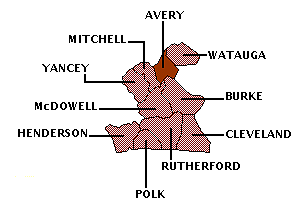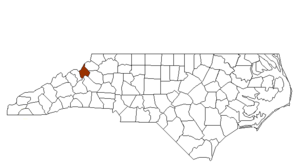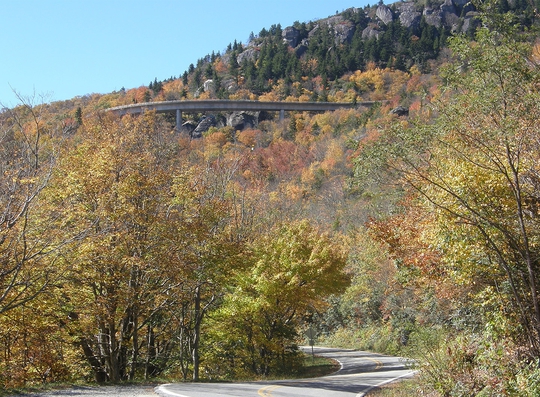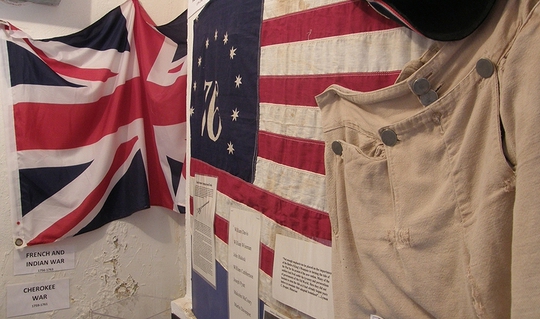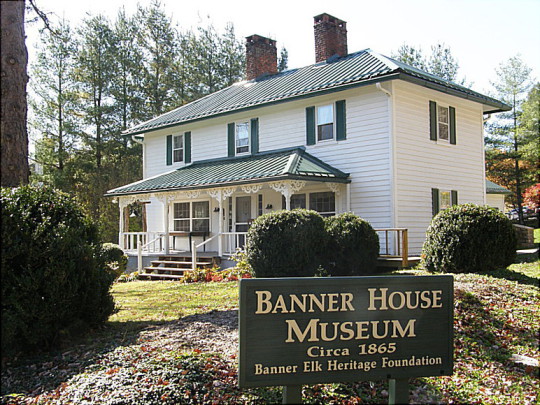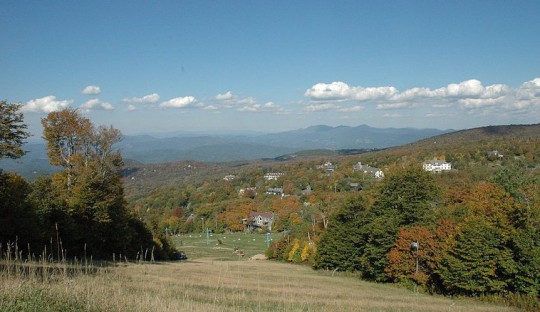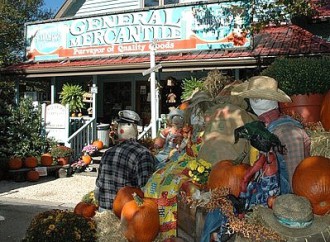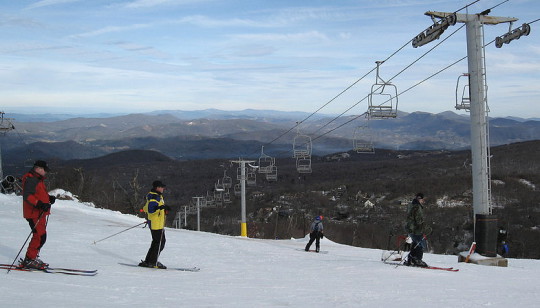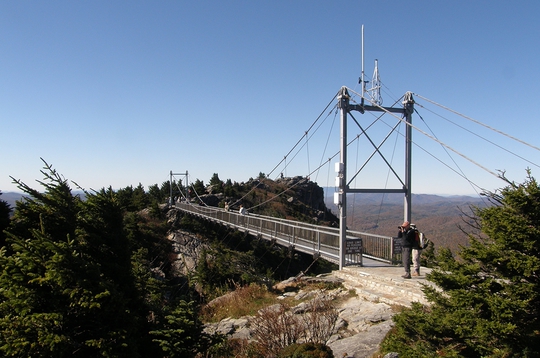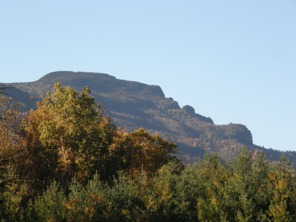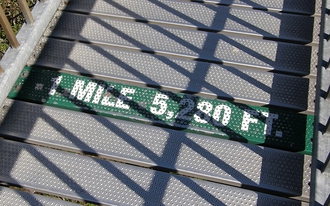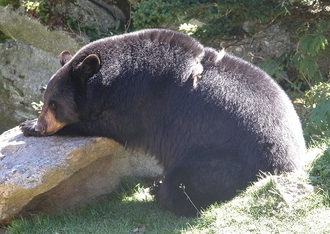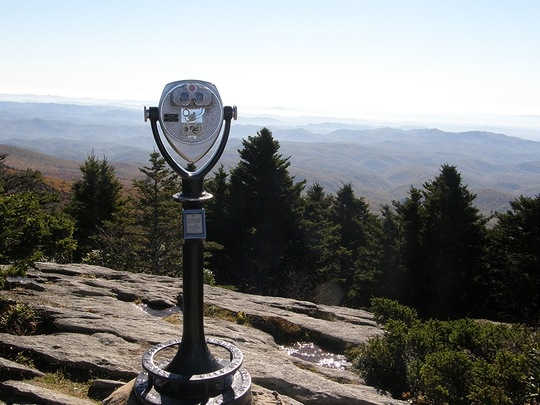AVERY COUNTY
Scroll down this page or click on specific site name to view features on the following Avery County attractions/points of interest:
Avery County Museum, Banner House Museum, Beech Mountain, Grandfather Mountain, Grandfather Mountain State Park
Fast facts about Avery County:
Created in 1911, the county is named for Colonel Waightstill Avery, a Revolutionary War officer and the first Attorney General of North Carolina.
The county seat is Newland, named for North Carolina Lieutenant Governor William C. Newland. Other communities include Banner Elk, Crossnore, Elk Park, and Linville.
Avery County’s land area is 247 square miles; the population in the 2010 census was 17,797.
It is noteworthy that, at an elevation of 3,589 feet, Newland is the highest county seat in the Eastern United States; the Blue Ridge Parkway’s famed Linn Cove Viaduct, a 1,234-foot curved bridge near Grandfather Mountain, is considered an engineering marvel.
Newland
Among the many resulting benefits of the American Bicentennial celebration in 1976 was a heightened effort by communities across the nation to preserve their local histories. The Avery County Historical Museum is one such example, the on-going legacy of the county’s bicentennial committee. As is the case with many other county museums across North Carolina, the Museum has made its home in the former county jail. Numerous themed rooms deal with mountain medicine, tools and trades, minerals, the military, and sports. Other rooms recreate a general store, schoolroom, and early 20th century bedroom. Original jail cells are open for inspection as well. Hours are 11-3 Monday through Saturday. 828-733-7111
Banner Elk
If ever a historic site deserved a “banner” headline, it would be the house museum in picturesque Banner Elk. The Banner House Museum both recreates a typical rural household from the 1870-80s and provides an over-view of the community’s history. Occupying a pleasant valley in western North Carolina close by Beech, Sugar, and Grandfather mountains, the town of Banner Elk in Avery County is home to about 900 year-round residents, 900 or so students when Lees-McRae College is in session, one 900-pound life-size bronze statue of an elk, and countless numbers of fuzzy orange, brown, and black caterpillars during the annual Woolly Worm Festival held each October. It is also home to the Banner House Museum, which showcases the home of one of the community’s leading families in the 1800s and depicts simple country life in the late 19th century.
Martin Luther Banner, his wife Mary, and their eight children were the first of the family clan to settle near the headwaters of the Elk River in 1848; four of Martin’s brothers – Lewis, Anthony, Edward, and John – soon brought their families to the area as well. With so many Banners congregating near one another along the Elk River, it’s not surprising that this section of the valley between Sugar and Beech mountains became known first as Banner’s Ford, then Banner’s Elk, then finally Banner Elk. Avery became North Carolina’s 100th county in 1911, and Banner Elk was incorporated that same year. The town museum occupies the former home of Samuel H. Banner, son of Lewis Banner. The two-story white frame house was constructed using mortise-and-tenon joints; built circa 1865, it is one of the oldest surviving homes in the community and was in the Banner family until 1977. The Greater Banner Elk Heritage Foundation purchased the home in 2005, and the museum opened two years later, serving both to provide visitors with a history of the community’s development and to recreate an average family environment during the late 1800s.
Several items displayed in the house, such as a lavender woven coverlet done by Jane Banner in 1870, are actual Banner family possessions, but the majority of items were donated by area residents. Such practical 19th century kitchen conveniences as toasters, butter churns, and cherry pitters seem quaintly antiquated to 21st century eyes, as do the spinning wheels, looms, and rope beds seen upstairs. Memorabilia in the first floor exhibit room focus on the origins of Lees-McRae College and the community’s development as a “high country” tourist destination. In 2012, a personal collection of Civil War artifacts became another featured exhibit, a very appropriate addition since the house itself is one of the stops on the North Carolina Civil War Trail. During the closing months of the conflict, many area residents provided safe houses for escaped Union prisoners of war and refugees from Confederate conscription and helped guide them to safety in Kentucky and Tennessee. Hours are 11-4 Tuesday-Saturday from mid-June through mid-October. Admission charged. 828-898-3634
Beech Mountain
Think North Carolina “beach,” and visions of sand and surf along the Outer Banks come readily to mind. On the opposite end of the state, however, there’s an altogether different kind of “beech” awaiting, one certain to please those who enjoy a variety of outdoor activities regardless of season. Beech Mountain, at an elevation of 5,506 feet, is the highest incorporated town east of the Mississippi, making it an especially “cool” place to visit in summer – the temperature at Beech in the month of August has topped 79 degrees only three times in the last 20 years!
Beech Mountain epitomizes the best of what the North Carolina “High Country” has to offer. Much of the town’s recreation centers on Buckeye Lake, providing opportunities for non-motorized boating and fishing. Common catches include rainbow trout, brown trout, and catfish. The indoor recreation center overlooking the lake has a full-size gymnasium for basketball and volleyball, a walking track, and a fitness room; outdoor facilities include tennis courts, a ball field, and a children’s playground. Beech Mountain maintains ten hiking trails, each promising scenic beauty and possible encounters with wildlife; two are highlighted by picturesque waterfalls.
The town is justifiably proud of its excellent biking trails. The Beech Mountain Parkway, on the south side of the mountain, climbs 1,400 feet in three-and-one-half miles, ending at the former Tour DuPont finish line. Once atop the mountain, bikers will find numerous trails offering additional challenges. Special bike rallies are held the third Saturday of each month from March through October. Hiking and biking trail maps are available for a nominal fee at the Chamber of Commerce office, on the left side of the road as you enter town.
The first weekend in October, when the countryside is bursting with fall colors, Beech Mountain hosts the annual "Autumn at Oz" celebration. From 1970-1980, the Land of Oz theme park was a popular summer attraction. Although the park has been closed for many years, vestiges have survived, including Dorothy’s house, Uncle Henry’s barn, the witch’s castle, and the all-important yellow brick road – after nearly 40 yeas, the 44,000 yellow-glazed pavement bricks still lead the way from Munchkinland to the gates of the Emerald City! A two-day event, Autumn at Oz is brimming with colorfully costumed characters, memorabilia and collectibles, and Oz-inspired activities and culinary delights. Thousands attend annually. Wizard of Oz fans in particular should know that Dorothy’s house is available for overnight stays – imagine spending the night in Dorothy’s farmhouse and watching the classic movie in the comfort of Auntie Em’s parlor!
No description of Beech Mountain would be complete without a mention of Fred’s General Mercantile. Fred’s opened on February 9, 1979 and has been meeting the needs of its customers – about 380 year-round residents and thousands of seasonal visitors – every day since, 11,000 consecutive days and counting. Fred’s motto is, “If we don’t have it, you don’t need it,” and the country store has a little bit of almost everything, from groceries to hardware and sundries to souvenirs. (Fred's General Mercantile photo by Babette McAuliffe.)
In winter, of course, Beech Mountain is famous for its mile-high skiing. Ski Beech Mountain Resort boasts the highest slopes in the eastern United States and features a high-speed quad lift that gets skiers to the top of the mountain quickly. In addition to its ski slopes, which range from easy to difficult, Ski Beech also offers a tube park, skating rink, and advanced terrain park with rails, boxes, and jumps. Conveniences include the View Haus cafeteria, the Beech Tree grill, locker rooms, and a nursery for children 6 months to 3 years. All necessary ski equipment is available for rent. Another popular winter attraction is the town’s youth sledding hill, intended for kids 12 and under. Beech Mountain has its own snow-making machine, and the hill is open daily, free of charge.
Linville
Grandfather Mountain is among a handful of North Carolina attractions that truly deserve being considered a “must see” destination for any resident of or traveler to the Tar Heel State. Open year-round, this is a special place that offers spectacular views of the Blue Ridge, Black, and Smoky Mountain ranges and is home to the famous – and fun – Mile High Swinging Bridge.
The name given to the mountain by the native Indians was "Tanawha," meaning "a fabulous hawk or eagle." Early European settlers to the North Carolina backcountry are thought to have named the mountain “Grand-father” because its ridgeline, when seen from a certain vantage point, resembles the profile of a bearded man looking toward the sky. At 5,964 feet above sea level, Grandfather Mountain’s Calloway Peak is the highest elevation in the Blue Ridge Mountain Range – not to be confused with Clingman’s Dome, the highest peak in the Smoky Mountains at 6,643 feet, or with Mount Mitchell, which, at 6,684 feet, is both the highest peak in the Black Mountain Range and the highest elevation east of the Mississippi.
No matter the season, a visit with Grandfather promises a day of fun. During late spring and early summer, the hills are blooming with red and white rhododendron, mountain laurel, azaleas, lilies, and other varieties of wildflowers. Even in at the peak of summer, Grandfather Mountain is a great place to avoid the heat – the record high, set back in August, 1983, was a comfortable 83 degrees. The peak of fall foliage is usually in mid-October.
Although the tremendous views from Linville Peak alone would be worth the price of admission, the 218-foot suspension bridge which allows visitors to cross safely and conveniently from the parking area to the Peak makes getting there half the fun. The original bridge opened Sep-tember 2, 1952, with Governor William B. Umstead and his nine-year-old daughter, Merle, being the first to cross. At 5,305 feet above sea level, it is the highest suspension foot bridge in the world. Charles J. Parker, director of NC’s Travel and Tourism Department at the time the bridge opened, suggested the name “Mile High Swinging Bridge” and the name caught on. Strong winds sometimes create a whistling sound as they pass over the suspension, so it can accurately be described as a “singing” swinging bridge on occasion. Designed by architect Charles Hartman, Jr. of Greensboro, the bridge originally had wood flooring, but over time the wooden planks were replaced with metal flooring; the bridge was completely refurbished in 2000.
For those who have the time and desire to do so, a trail rated as very difficult leads hikers to Calloway Peak and Attic Window Peak. The park is also home to a nature museum and nature preserve. The 2,200-square foot museum opened in May, 1990, and includes specimens of North Carolina flowers, birds, minerals, and gems, including a 165-pound purple amethyst crystal, the largest ever found in North America. The nature preserve provides shelter to otters, cougars, deer, eagles, and, of course, the famous black bears. You’ll want to visit Mildred’s Grill even if you aren’t hungry – spend time on the outdoor deck and chances are good you’ll see a wide variety of birds, including hummingbirds. Eating at this venue is like having lunch in an aviary! Even the ride up the mountain is a treat. The Half Moon Overlook offers an excellent view of Grandfather Mountain, one of the most photographed places in the state. Farther up the hill, you can scamper around Split Rock and Sphinx Rock. On the way down, be on the lookout for Forrest Gump Curve. Grandfather Mountain is open year-round, with hours varying seasonally. Closings will also occur if weather conditions warrant. Admission charged. 828-468-7325
Linville
2,456 acres along the crest of Grandfather Mountain form North Carolina’s newest state park, formally authorized by the NC General Assembly in 2009. The acquisition was arranged with the help of The Nature Conservancy and The Conservation Fund. Hiking is the primary activity, with 12 miles of challenging trails traversing steep, rocky terrain. Hikers must use ladders and cables in some of the steeper sections, and there are stream crossings that may become dangerous when river levels are unusually high. Hiking permits are required and are available free of charge at each of the trailheads. Be aware that Grandfather Mountain State Park and the private Grandfather Mountain attraction are separate entities that operate – and cooperate – alongside each other. The State Park opens daily at 8 AM year-round; closing hours vary seasonally. 828-963-9522
Avery County is bordered by BURKE, CALDWELL (Region Eight), MITCHELL, and WATAUGA counties.
Return to REGION NINE HOME PAGE.
Return to GEOGRAPHIC REGIONS HOME PAGE.

